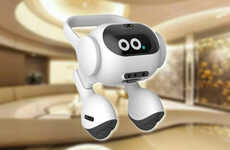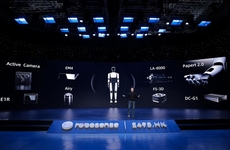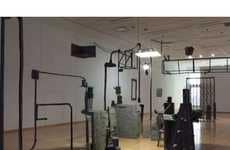
The El-E Robot
Ben Preiss — March 16, 2008 — Tech
The one-armed wonder named El-E (pronounced “Ellieâ€) because in operation it reminds you of an elephant's trunk, can retrieve objects that have been pointed to with a laser pointer. Developed at the department of biomedical engineering at the Georgia Institute of Technology, El-E's skill can be especially helpful for people with severely restricted mobility.
The EI-E was created by Charlie Kemp, an assistant professor and roboticist in the department of biomedical engineering at the Georgia Institute of Technology.
“The pointer gives the robot just enough context and guidance to solve the really hard problem of figuring out which object among many lying around in a room to pick up,†another professor explained. “People in artificial intelligence have been working on this problem for a long time.â€
The EI-E was created by Charlie Kemp, an assistant professor and roboticist in the department of biomedical engineering at the Georgia Institute of Technology.
“The pointer gives the robot just enough context and guidance to solve the really hard problem of figuring out which object among many lying around in a room to pick up,†another professor explained. “People in artificial intelligence have been working on this problem for a long time.â€
Trend Themes
1. Laser-guided Robotics - Disruptive innovation opportunities include the development of more precise and efficient robotic assistants that can retrieve objects based on laser guidance.
2. Assistive Robotics - Disruptive innovation opportunities include the application of robotic technology to assist individuals with restricted mobility in daily tasks.
3. Contextual Object Recognition - Disruptive innovation opportunities include the advancement of artificial intelligence algorithms to accurately identify and select objects based on contextual cues.
Industry Implications
1. Biomedical Engineering - Disruptive innovation opportunities include the integration of robotic assistants like El-E in medical and healthcare settings to assist patients and healthcare professionals.
2. Artificial Intelligence - Disruptive innovation opportunities include the development of AI algorithms that can accurately recognize and interact with objects based on contextual cues, like the laser-guided retrieval system of El-E.
3. Robotics - Disruptive innovation opportunities include the incorporation of laser-guided systems in various robotic applications, from manufacturing and logistics to domestic and personal assistance.
1.4
Score
Popularity
Activity
Freshness























